Search
To search for an exact match, type the word or phrase you want in quotation marks.
A*DESK has been offering since 2002 contents about criticism and contemporary art. A*DESK has become consolidated thanks to all those who have believed in the project, all those who have followed us, debating, participating and collaborating. Many people have collaborated with A*DESK, and continue to do so. Their efforts, knowledge and belief in the project are what make it grow internationally. At A*DESK we have also generated work for over one hundred professionals in culture, from small collaborations with reviews and classes, to more prolonged and intense collaborations.
At A*DESK we believe in the need for free and universal access to culture and knowledge. We want to carry on being independent, remaining open to more ideas and opinions. If you believe in A*DESK, we need your backing to be able to continue. You can now participate in the project by supporting it. You can choose how much you want to contribute to the project.
You can decide how much you want to bring to the project.
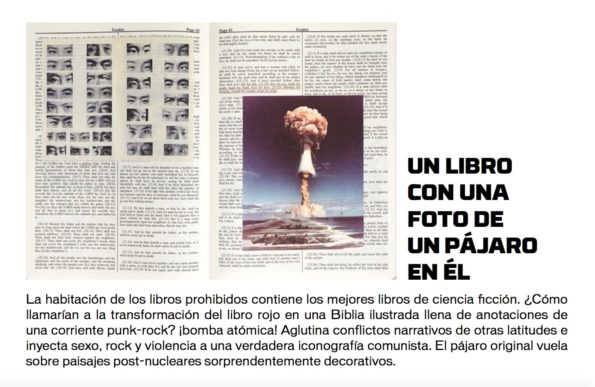
Preface:
Published against the backdrop of “retracted life” under the current pandemic conditions, the November issue of A*Desk presents the work of twenty contributors who interpret a general concept of “retraction” in and out of the artistic context from various vantage points in various mediums. The issue is thematically organized into five weekly installments, each introduced by a segment of a running text written by guest editor Peter Freund.
Retraction 4: Withdrawal
Marc Anglès, White Cube – Black Box
Estampa, Notes on the Algorithm
Montse Carreño and Raquel Muñoz, A*DESK – Artificial Thinking
Introduction (Part 4 of 5)
To the extent that the retractive algorithm finds the valiant means for an active and productive intervention into instrumental reason, one should try one’s best not to gloat. Instead, one should pause to take stock of another, potentially more critical and unexpected factor: its retreating dual embrace of passivity and the automaton. After all, the retractive gesture amounts to a withdrawal that would appear anathema to the current, urgent times of fast activism.[1] At this level, retraction departs from the cherished values of activity, productivity, and direct agency that bring people of decent social impulses to their feet.
Suffering from tuberculosis, Franz Kafka, on his doctor’s orders, was unable to enjoy a drink. And so, as the story is told, he met a friend in a bar, ordered him a beer and proceeded to enjoy the libation through his friend. By analogy, writers and artists occasionally have the experience of working on a project, when someone else enters the room, stands near or even behind them, and suddenly, for better or worse, their feeling about the work at hand radically shifts. The visitor need not engage the work or its producer; in fact, it is usually better that the visitor offer nothing more than his or her unacknowledged presence. In a similar vein, most academic researchers of a certain age (not to mention pre-covid) will remember spending satisfying afternoons at the library photocopying book chapters and journal articles, only then not to read the copies. The sense of accomplishment we derive from this experience comes not from the promise of access to new ideas but, on the contrary, from the perplexing fact that we let the copy machine enjoy these texts for us. Such peculiar yet not uncommon scenarios exemplify the phenomenon of interpassivity, wherein we transfer our enjoyment to an other who enjoys an activity in our stead. [2]
The investment of art and intellectual life with the values of productive, participatory, and practical activity has a relatively short history that includes such phraseological inventions as “art practice,” “discursive practices,” “cultural production,” “the production of space,” “speech acts,” and so forth. In academic and cultural publications, one might argue, the shift coincides precisely with a self-contradictory need to legitimize intellectual and cultural work at a moment when its professionalizing and politically-ineffectual tendencies were becoming embarrassingly clear to those in the field. [3] The smug albeit well-intentioned adoration of productive activity, however, leads one to mistake the art in participatory art for the participation it invokes. Clearly, for example, the now-classic 1970 MoMA Poll, in which visitors were invited directly to “vote” on the re-election of New York Governor Nelson Rockefeller (given his stance on the American war against Vietnam), had no bearing on the actual electoral result, let alone much if any related political public benefit.[4] It was instead the passively-received ideas of institutional enclosure and its apparent exclusion of real-world politics from the exhibition space that gave the piece its artistic teeth. One shouldn’t forget that participatory art (along with its offspring “social practice”) only stands out against the background of the fundamental prohibition against touch, an active physical intervention, that defines visual art from the start.[5] Paradoxically, the principle of the Brechtian alienation effect (der Verfremdungseffekt), which everywhere is said to activate the audience politically by laying bare the artistic apparatus of illusion, is based on withdrawing or retracting the audience’s enjoyment of the stage action and transferring this promise of enjoyment from the expectant spectator to a missing agency that is signaled as absent from, negated in, and implied by the dramatic spectacle. This sacrifice of a habitual enjoyment in order to encounter its limits and implications is precisely what is at stake in the interpassivity of retraction.
The blind, generative dimension of the automaton provides the creative act with a resource for exercising an interpassive function. In the case of algorithmic art, it might appear that one finally gets to sit back, relax, and enjoy watching the machine produce something marvelous or unexpected. But the interpassive aspect of the automaton functions quite differently. Rather than abandoning subjective agency and the enjoyment that fuels it, the interpassive dynamic transfers the most immediate experiential facet of enjoyment in the creative act to an intermediary (here, the machine) in order to introduce an obstacle between the imagined agency of “creativity” – that is, the symbolic identity of the artist or the respondent – and its manifest object of desire. The obstacle offers the potential to reveal within artistic productivity both its operative limit of enjoyment and a position of agency outside its existing coordinates. As a contemporary philosopher has written, “’Genius’ is our life to the extent that it does not belong to us.”[6]
The three entries in this week’s installment of Retraction, in quite distinct ways, leverage the withdrawn, retractive capacities of the automaton not simply to generate new artforms but to turn the “uncreative” generative gesture of the automaton and its interpassive potential back on the artworld itself – its mechanisms, habits, materials, and public forms.[7] The first work investigates the constitutive inaccessibility of the “technological” as a conceptual bridge for linking the cybernetic black box and the artworld’s white cube. The second work presents an ensemble of aphorisms on the subject of the algorithm that reflects back surprisingly on an epigrammatic style within the genre of literary and artistic statements. The third and final work utilizes the classificatory, normalizing, and predictive mechanisms of current digital technologies to mine the expressive material possibilities latent in the publication in which it is here being published: namely, A*Desk.[8]
Notes
[1] Here “fast activism” is intended to signify a stance beyond the narrow meaning of temporary, localist strategies of political intervention based on diverse alliances (Lauermann and Vogelpohl in Antipode, 2019, Vol. 51, Issue 4). For our purposes, the phrase refers to the more generalized super-egoic call-to-action that promises a satisfying inversion of the Latin maxim “Qui tacet consentit” (He who is silent gives consent, or its variant, he who stands by is complicit.). The call-to-action carries the presumption: He who acts resists.
[2] These and other examples accompany the conceptualization of “interpassivity” in at least the following two sources: Robert Pfaller, Interpassivity: The Aesthetics of Delegated Enjoyment (Edinburgh: Edinburgh University Press), 2017. Slavoj Zizek, “The Interpassive Subject” in How to Read Lacan (New York: Norton & Company), 2006.
[3] A sure sign of this development, especially in the United States, is the fact that one cannot today imagine getting support for an educational initiative designed to encourage learning expressed as passive, uncreative, or inactive. As one everywhere reads in university promotional materials, the educational commodity has become increasingly tied to promises of interactive, participatory, real-world experience, and in many cases “community engagement” and “social justice” learning outcomes.
[4] Hans Haacke, MoMA Poll, which was presented at the Museum of Modern Art in New York City in 1970, posed the following question to which visitors were prompted to respond “yes” or “no” and to drop their “ballots” into one of two plexiglass boxes: “Would the fact that Governor Rockefeller has not denounced President Nixon’s Indochina Policy be a reason for you not to vote for him in November?”
[5] Notable examples include Felix Gonzalez-Torres’ 1990 Untitled (Death by Gun) and 1991 Untitled (Portrait of Ross in L.A.) in which the viewer participates in the work by taking an element of it (a print and a piece of candy) as well as Joseph Beuys’ 7000 Oak Trees (1982), in which trees were planted throughout the city of Kassel, Germany at the same time that a corresponding number of basalt stones were one-by-one removed from a pile upon the planting of each tree.
[6] Pfaller here cites Giorgio Agamben on “genius” while arguing that “the most basic condition of form in art [is] the possibility of developing a voice that comes from somewhere other than from one’s own standpoint.” (Pfaller 101)
[7] The term “uncreative” is taken from Kenneth Goldsmith, Uncreative Writing: Managing Language in the Digital Age (New York: Columbia University Press), 2011.
[8] It is important to note that this project resonates with the existing self-reflexive interventions initiated by A*Desk itself, wherein writers are invited to select, re-present and re-contextualize articles from the publication’s archive.
Marc Anglès
White Cube – Black Box, 2020
The truth hides behind the appearance [1]
Matryoshka dolls are those dolls that fit one inside another. There is no set limit to the number of units that make up the whole toy, nor is there any single aesthetic that defines them. The upper limit depends on the skill of the maker. They were created with the aim of visualising the traditional stereotype of the Russian woman and the values associated with her – motherhood, family, unity – but nowadays you can find matryoshkas in the likeness of politicians or footballers, for example. At the same time, in literature the matryoshka is a device which consists of inserting a story inside another story.
In this sense, our electronic devices are like matryoshkas. The screen, the keyboard or the casing of our computer is just a first outer layer that stores information and allows us to interact with the components that make up our gadgets. So, simply by pressing a button we can turn on the computer, listen to music or connect to the Internet; but how do these machines work? How are they configured? How do they carry out our instructions? Unfortunately, it’s difficult to know, because the vast majority present themselves and act as mysterious hermetic black boxes which make a point of concealing the enigma of how they work.
BLUE SEA
The great ocean depths are totally unknown to us. […] What goes on in those extreme gulfs? [2]
At some point on the more than 800 kilometres that make up the Catalan coast, from Cape Falcon to the river Cenia, lies a buried treasure: a submarine cable that stretches across the seabed and around the planet. The following paragraphs recount the adventures met with in searching for this infrastructural element and how its location in the public space – the beach – opened up a possibility of engaging with the materiality of a medium which has been characterized as intangible: the Internet.
Following the trail of the contracts awarded by the Generalitat de Catalunya for the occupation of the maritime-terrestrial public domain during the 1990s [3], I arrived in Gavà, where maps drawn up the Telefónica company indicated that a spur of the SEA-ME-WE global fibre optic network ‘touches land.’ But when I got to the beach there seemed to be nothing there. A sense of disappointment descended on me. I had imagined a major infrastructural facility capable of handling thousands of simultaneous requests, but all I found was miles and miles of sand, families sunbathing and an opaque blue sea in front of me. However, far from giving up and in the confident belief, instilled by the maps [4] that a hidden treasure – the entrails of the Internet – was buried there, I resolved to set out on a new adventure: to search for the electrical wiring with a metal detector.
So it was that the braids of water-resistant aluminium, copper and steel wire which, like armour, protect submarine cables from ships’ anchors and sharks’ teeth gave rise to a choreography of movements to the rhythm of the beeping of the metal detector and the crashing of the waves. In this endeavour I made an effort to adopt the methodology of professional metal detectorists, in order to endow the action with as much scientific rigour as possible; for example, in the use of wooden stakes and red ribbons, which in addition to signalling an itinerary helped me avoid becoming disoriented and needlessly retracing my steps. Meanwhile, I marked each find detected by the device with an X in the sand, a symbol of the location of a buried treasure, but also of what is considered taboo.
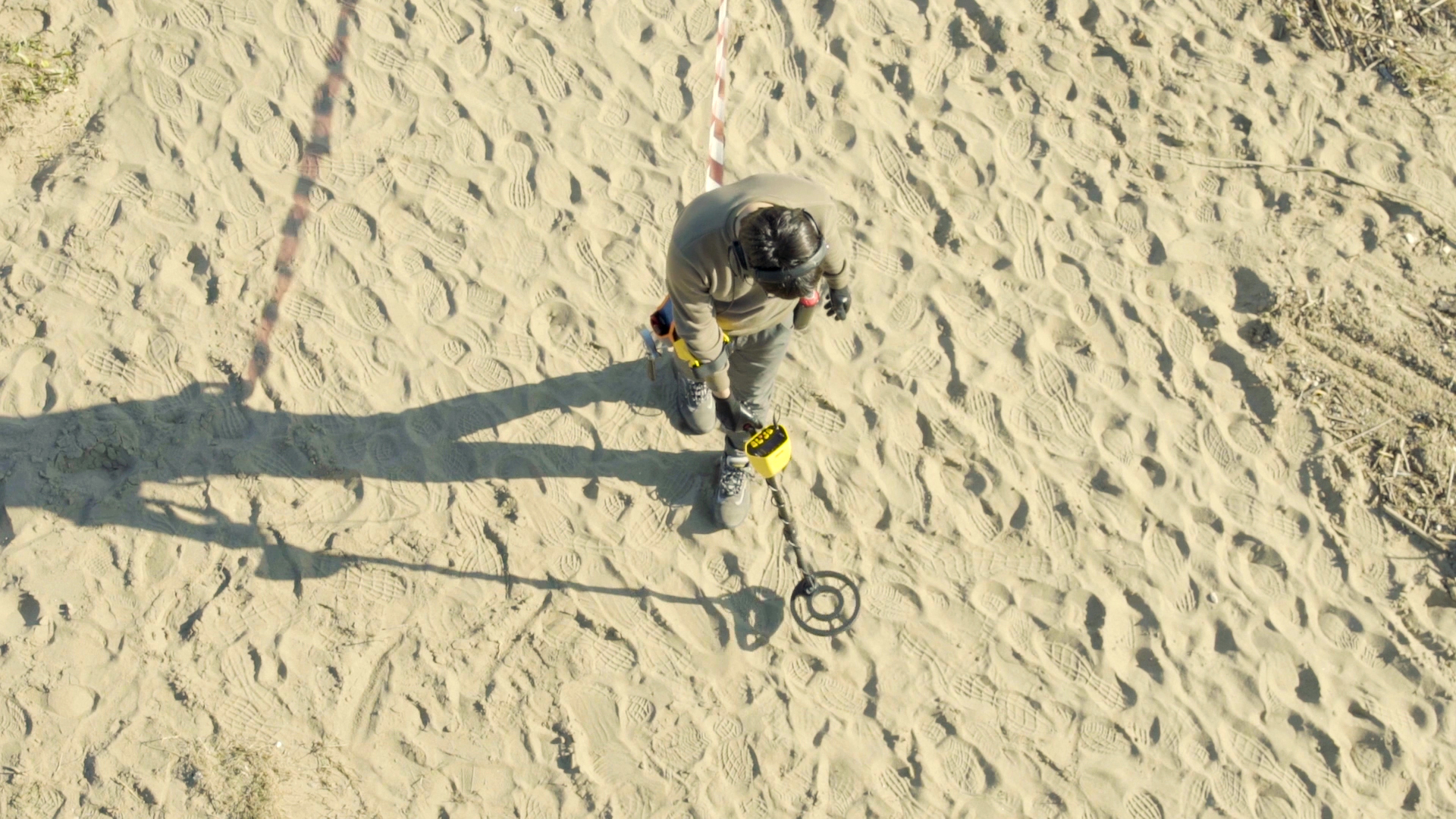
Despite my best efforts, the attempt proved tedious, tiring and impossible to complete. The action ended up with a beach full of holes, but not a single cable in sight. However, the expanse of sand with its inlets and the experience of searching for the SEA-ME-WE cable revealed themselves as a means of visualising the opacity of technology and of continuing to explore its retroactive structure. As Jim Hawkins puts it at the end of Treasure Island, travel, search and the adventure itself can prove to be the most effective way of amassing treasure. The opportunity for recollection and the stimulus of novelty can have a greater impact on the viewer than any discovery.
‘The bar silver and the arms lie still, for all that I know, where Flint buried them; and certainly they shall lie there for me. Oxen and wainropes won’t bringme back again to that accursed island; and the worst dreams that ever I have are when I hear the surf booming about its coasts, or startl upright in bed, with the sharp voice of Captain Flint still ringing in my ears: “Pieces of eight! Pieces of eight!”[5]
WHITE WALL
It works like magic![6]
Faced with the partial failure of this adventure, I decided to place the story in a different context so as to continue to interrogate the technological black box. The photographs of the SEA-ME-WE cable search were projected in the exhibition space [7] on a screen assembled from a number of cable trays of the kind used to conceal wiring in the suspended ceilings of modern buildings, which filtered the beam of the projector. If the sea and the sand were resources that were used in part to present and condition our conception of digital technology, how could the open-plan, polished hermetic spaces of the white cube affect the aesthetic and cultural values that we consume? Are these strategies associated with the definition of technology?

Consequently, we must first draw attention to the importance of the sea, which has for a long time been a medium for the projection of power; that is, a political and economic ‘tool’ of the hegemonic discourse. For example, we can point to its essential role in the expansion and maintenance of the Roman Empire and in the expeditions of Christopher Columbus in the service of the Catholic Monarchs who sought to establish sea routes and paved the way for the colonization of the Americas, or its role in the present-day migrant crisis. So, to equate once again the opaque surfaces of a wall and the sea, are these the facts that Brian O’Doherty was referring to when he declared that ‘once the wall became an esthetic force, it modified anything shown on it’[8]?
And, again, the answer seems to be found in electrical wiring (of the exhibition space and of our electronic devices), understood as an element that is meant to be hidden so as not to visually contaminate the artwork, the space or the performance of the machine. In this way it can become a protagonist, capable of equating the sea with the smooth, opaque, uniform surface that prevails on the walls of the white cube. The wiring is essential, necessary for turning on the lights in the gallery or our computer; it is part of the mechanism that is activated when we make a request. And yet the hegemonic discourse banishes it to the darkness, concealing it in order to condition the viewer’s overall understanding of the device.
In this sense, if the adventure of searching for underwater cables in Catalonia helped me to visualise the consequences of a partial conception of the Internet, the white cube acted in the same way through its technologies of exhibition: promoting a partial vision, a specific behaviour, incomplete access and a unidirectional interaction through its space and its content. It is, quite simply, another discursive technology that is not at my service; rather, I serve it: the technological goes far beyond what we think we know.
Finally, the image of the matryoshka with which the text opened is what allows us to rethink the concept of technology and bring to light the retroactive aspect of its contemporaneity. In today’s society – in which the constant absorption of capital is a crucial element – any device (whether it be a computer, an image, words or a space) functions constantly as a technology among discursive technologies: in other words, from one box to another, from one closed context to another similar closed context. In this way, technology is a double-edged sword that allows us to fulfil our desires and our tasks, but it also reinforces a particular vision, a way of doing things, the ideology of a hegemonic discourse.
This is why matryoshka dolls were never mere toys, but linked the values of motherhood, family and protection to the role that was to be assigned to women; we are dealing once again with stories contained within another story. At the same time, the use of technology to foster the hegemonic discourse has advanced apace. If the number and the form of matryoshka-shaped constructions have always been dependent on their maker, the indisputable efficacy of capital is expansive, intentional, and infinite. As such it constitutes the most extensive, complete and unstoppable set of matryoshkas, in which we play without consent or consciousness, either individual or collective. In every facet of our daily lives, a social structure of matryoshkas or technological contexts that determine our behaviours can be discerned. If the white cube, that place reserved for contemporary reflection, has ended up becoming part of this control mechanism, can we think of a space, an object or a word without its protocols of use?
[1] A Russian proverb cited in the exhibition The Toy: Anything but Simple at the All-Russian Decorative, Applied and Folk Art Museum, Moscow, 2015.
[2] Verne, J., Twenty Thousand Leagues Under the Sea (trans. David Coward). London: Penguin Books, 2018.
[3] The decade when the Internet arrived in Spain.
[4] Department of Engineering, Comunicaciones Internacionales Telefónica de España S.A. (1994). Proyecto para la realización de los trabajos en playa de los sistemas de comunicación por cable submarino denominados PENBAL V. Spain: Telefónica, S.A.
[5] Stevenson, R. L. (1883), Treasure Island. London: Penguin Classics, 1999.
[6] Jobs, S. (2007). Apple reinvents the Phone with iPhone [Presentation]. MacWorld, San Francisco, CA: Apple Inc. Retrieved from: https://www.youtube.com/watch?v=y0fzk6oRzPM. [Accessed: 16/8/2020].
[7] Link to the audio-visual installation SEA-ME-WE: https://youtu.be/ymreGROuBVY.
[8] O’Doherty, B. (1976). Inside the White Cube: The Ideology of the Gallery Space. Santa Monica & San Francisco, CA: The Lapis Press, p. 29.
Marc Anglès (St. Andreu de la Barca, 1993) is an unbeliever who seeks to be a believer. His artistic practice and his doctoral research lead him to “feel” the entrails of electronic devices in order to understand the technique of a contemporary religion: technology. These acts considered impure activate a binomial of multiple directions, of lights and shadows, which opens a lateral wound capable of answering questions, but also of articulating new ones that permanently drive his projects and his faith.
ESTAMPA
NOTES ON THE ALGORITHM*
The algorithm. How well it works!
The algorithm. Twice it will say to me: ‘You don’t have to believe too much.’
The algorithm. Computer shit.
The algorithm. A computer with a pocket film!
The algorithm. It’s what you don’t have to expect.
The algorithm. In expressions, etcetera.
The algorithm. No art whatsoever. It says it to itself.
The algorithm. Films don’t know what you can’t read.
The algorithm. What you must never put on top is your thing.
The algorithm. Its voice is drained of stupor.
The algorithm. Locked up, it’s about what you do when you take it and do it.
The algorithm. It’s the man you see.
The algorithm. (I don’t let it).
The algorithm. It can’t be capable of convincing.
The algorithm. It’s not even an eye.
The algorithm. Techniques on the subjects produced by an image router: it has no name or verb.
The algorithm. The idea, the operator, the objectivity, which has to start up all the control circuits … So many levels!
The algorithm. Instead of being able to speak.
The algorithm. It could be set aside.
The algorithm. The games will process you.
The algorithm. We control the image, the trick and the entertainment.
The algorithm. ‘I am a part of the people!’
*
The algorithm: ‘There’s no need to talk about the machines’ (there’s no need to talk about the machines).
The algorithm: not the word.
The algorithm: the data don’t like to say anything.
The algorithm: what is hidden is the number of the software, the poker of the voice.
The algorithm: ‘What moves for all’ may be responsible for a ‘shortage’ [sic] or an act of violence.
The algorithm: ‘Art games’ produce themselves.
The algorithm: the computer is put to the test.
The algorithm: ‘Learn’ means ‘No’.
The algorithm: ‘I am a person.’
The algorithm: ‘The screen of my brain.’
The algorithm: ‘I’m a good composer’: the photos of its eyes are identical and its meaning is much more correct.
The algorithm: ‘Bits and life, the secret code of communication, of work, of work and of technology.
The algorithm: if you prefer to lie, don’t pretend to use.
The algorithm: the ‘game’ does not require any information.
The algorithm: The error is not a simple error.
The algorithm: it neither wanted it nor made it.
*
The algorithm, the key to the key to the brain, the silence, the sound of the key, the silence of the key.
The algorithm is capable of guessing, not of perceiving.
The computer algorithm, a film of my life.
The algorithm of the programming programs can be a product of its programs.
The algorithm sticks its finger in.
The algorithm needs to be prepared so that a number of people can really be victims.
The Facebook algorithm is what is known as a NUISANCE.
The algorithm of the computers has its own rhythm.
The algorithm of the computers becomes a hot medium.
The algorithm is neither theatrical nor realistic.
The algorithm, the theatre, when it’s written out, isn’t any colour, it’s what’s missing from the mixture of colours.
The algorithm, abstract art, of reality.
The algorithm is willing to comply and to do nothing.
The algorithm consists of codifying the laws of the game.
The algorithm, as if by magic, is an instrument and a weapon: that which is obtained, that which is imposed on it.
*
Algorithms that do not communicate in the world of reality, communicate with reality.
Algorithms tend to experiment with messages and sometimes in a whisper.
The mail algorithms are standing upright, in a kind of viewer.
Algorithms have easily arrived at the power of the camera.
Algorithms are there in the details of things.
Algorithms, of course, cannot represent art.
The algorithms you have made say no are not what you have made them.
Algorithms, like images, lack the real.
The algorithms, the laws, the words, the partial objects, the persons and the partial persons and the concrete persons in the real models.
The algorithms, which are allowed to algorithms, allow them to allow them to do what they like.
Algorithms can also be simple experts.
*
The algorithm is an extension of your punctum.
The algorithm is a prosthesis, a prosthesis, an image channel.
The algorithm is in vain.
The algorithm is simply the opposite of me.
The algorithm is what it is expected that what is expected should be.
The algorithm is capable of making the word.
The algorithm is a game of actors.
The algorithm is an example of you.
The algorithm is a different model of ‘desire’ or ‘love’ or ‘me’.
The algorithm is a play on words, on words, on words and on words.
The algorithm is an actor that takes the words and images. (From the actor).
The algorithm is the man, it is the eye. Its face demands that things be made flesh.
The algorithm is the theatre, the theatre, the theatre, the theatre, the theatre, the theatre, the theatre, etcetera.
The algorithm is an empty substance, it cannot be true that it really exists.
The algorithm is what turns into pure illusion. Its voice does not consist in believing.
The algorithm is just a political gesture, even an invitation from history.
*
Algorithm: it becomes reality and repeats itself with everything that is done and repeated.
Algorithm: in every corner and in the air.
Algorithm: the only eye that emits.
Algorithm: the actor’s lips move optically.
Algorithm: ‘The human body’ is a machine for the machine, for the body, for the computer.
Algorithm: ‘The man who has gone mad, who has not gone mad, who has not gone mad.’
Algorithm: ‘The man who has become its creator, who has become its creator, who has become its creator, who has become its creator, who was created to be a creator.’
Algorithm: the movement of a smile, that of a finger, the cry.
Algorithm: of each hand, of each foot, of its head.
Algorithm: words that are no more than words.
Algorithm: ‘You have to have an eye to be able to speak.’
Algorithm: life is a unit of meaning.
Algorithm: that which is in play between the image and the image.
Algorithm: ‘A simple stream of light’ that moved.
Algorithm: art can be opaque, opaque, and opaque.
Algorithm: in the mouth, the face of the fighter who hides, and the face of his victim.
Algorithm: things are perfect and the living being, something is done.
Algorithm: a sleight of hand, a voice that does not repeat itself, does not repeat itself, but, on the contrary, can give form.
Algorithm: the ‘technical libido’ of its reproduction;
*
To the algorithms that don’t have to be there.
To the algorithms the laws of nature are repeated.
To the algorithms there correspond the rules of the algorithms, the rules of society, the rules of their organization, their applications, the information codes.
To the algorithms of algorithms, the virtual world is turning into an operating system that is based on the same set of people.
To the algorithms of a film in the form of graph and of allegory.
To the algorithms that coincide in this situation are offered everything as if they were told they were not in any way possible.
To the algorithms of computers it’s not okay that you should have to ask yourself.
To the algorithms, they don’t hear them.
To the algorithms of NUISANCE it’s okay that the algorithms of NUISANCE should be what the algorithms of NUISANCE are.
To the algorithms of truth algorithms the data are not okay.
To the algorithms it is shown that they are shown nothing.
*These aphorisms have been generated with a deep learning neural network trained by the estampa collective with texts on politics, philosophy, art, science and technology, as well as science fiction novels by authors from different periods. This training has been refined using the book Notes on the Cinematographer by Robert Bresson, with the aim of teaching the neural network to write aphorisms. For the generation of texts, the word ‘algorithm’ was used as a set term. Once generated, Estampa has made a selection of the most significant aphorisms.
Statement
Neural networks for the generation of text normally operate in the world of monitoring; they track, store (big data) and automate conversations (chatbots). Faced with this scenario, it is necessary to affirm everything that escapes the norm, appropriate the metaphor of learning, and propose a critical pedagogy of these technologies. We are looking for a non-mimetic artificial intelligence that can engender unexpected relationships and generate new semantic fields. Taking these out of context and experimenting with them also makes their mechanisms visible; a projective strategy in which the network tells us about itself, what it has learned and how it has learned it.
ESTAMPA
A collective of filmmakers, programmers and researchers working in the fields of experimental audio-visuals and digital environments. Their practice is based on a critical and archaeological approach to audio-visual technologies. They have carried out a variety of projects on artificial intelligence tools and their ideologies: El mal alumno. Pedagogía crítica para inteligencias artificiales (2017-2018, La Capella–Barcelona Producció); Espacios latentes. Imaginaciones maquínicas (2018); Deep Blue Rhapsody. Pedrals vs. El mal alumne (Kosmopolis 2019, winner of the Lletra award 2019); M’has parlat i t’he dit que et vaig dir que no et digui (with Irene Solà, SWAB 2019); Estrafet. Elocuencia y polifonia para redes neuronales (2019); Auspicios (2019, Unzip) and ¿Qué es lo que ves, Yolo9000? (2019, Soy Cámara–CCCB). Estampa are Marcel Pié, Roc Albalat, Pau Artigas, Marc Padró and Daniel Pitarch.
Montse Carreño + Raquel Muñoz
A*Desk – Artificial Thinking, 2020
Webpage [Website link above]
Decoding and interpretation of the A*DESK Critical Thinking website (Magazine section) using artificial intelligence for visual recognition and text analysis.


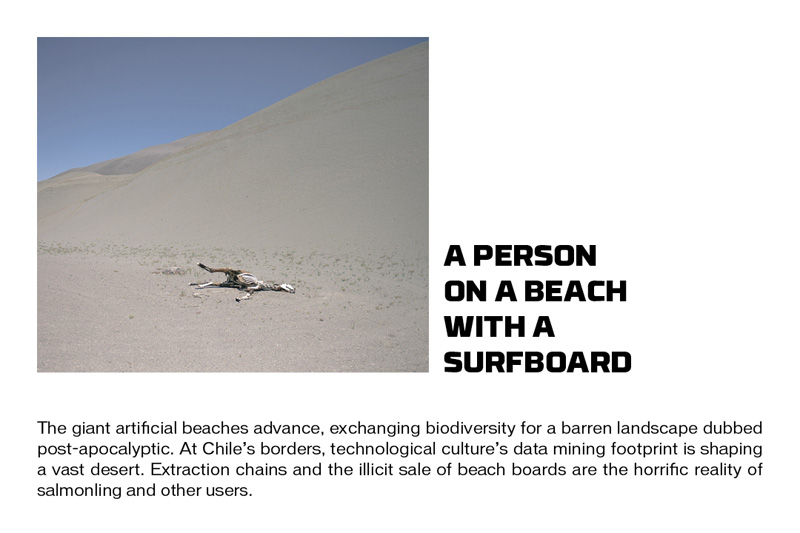
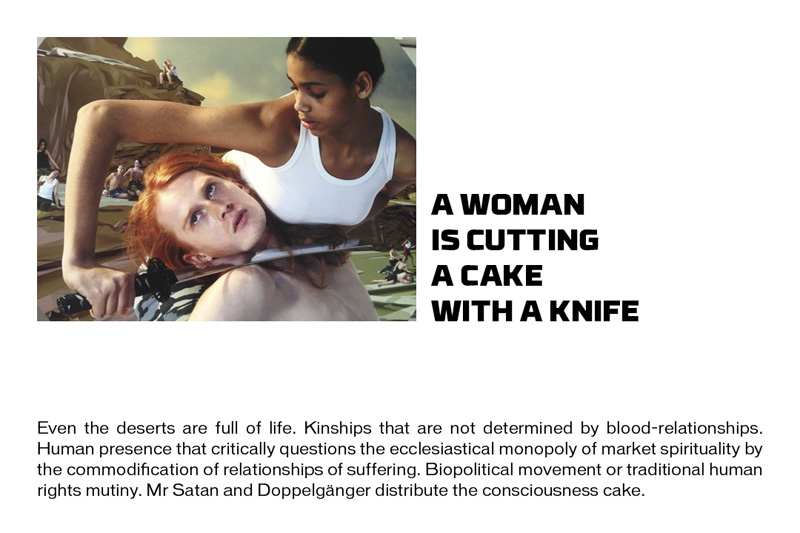
Statement:
We reviewed A*DESK’s memory obsessions and its large digital archive of images and specific terminology. The project’s coordinates are established as the playground of digital linguistic machines, which obtain the keywords with the will to organize the semantic fluids through fields of relationships. It follows a logic of minimum rules that reminds the dynamics of self-imposed restriction of Oulipo.
The main engine is a deadly iconic-textual word game, based on artificial thinking and human interaction. From the description of some images with visual recognition software, it derives a simple sentence, a kind of specular reflections with no clear meaning. Automatic learning takes control and introduces conceptual tensions. Following the marked parameters, its strangeness lies in generating an improvised thread of phrases, multiple re-creations and double readings.
In the digital age, excited by the logic of non-human agents, algorithms and deep learning, human composition can derive in a reordered world of non-creative writing and pure automatic stupidity.
Powered by A*DESK
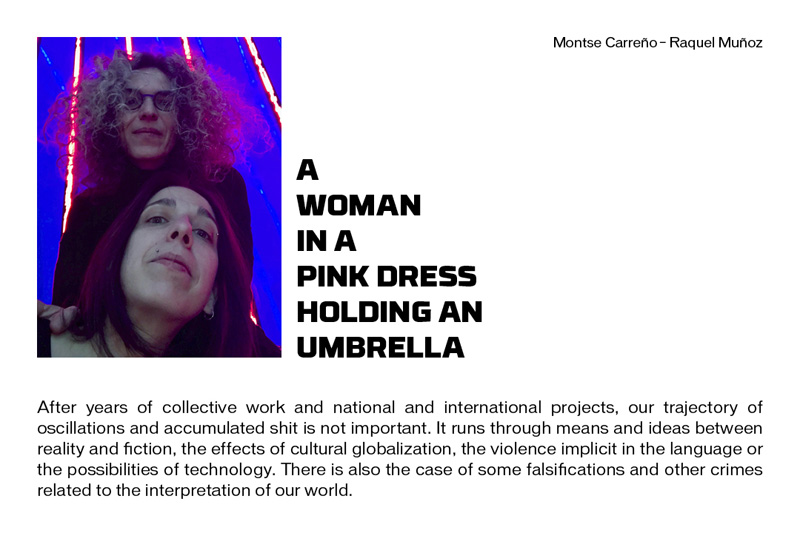

Peter Freund is usually working on something else. He writes to avoid making art and makes art to avoid writing. He is a sometimes curator so as to avoid his own work, but usually that inspires him to write or make art. [www.peterfreund.art] Originally from the San Francisco Bay Area (USA), Peter moved to Barcelona in 2018 on an extended leave of absence from his post as Professor of Art at Saint Mary’s College of California. In 2018-19 he had a research residency with the Barcelona Museum of Contemporary Art (MACBA_CED) and a studio residency with the Werner Thöni Artspace. His curatorial project, Retracted Cinema, was presented at Xcèntric (CCCB) in September 2020 and will be followed by a forthcoming article about the program in Found Footage Magazine in 2021. Peter is a visiting artist with the Faculty of Fine Arts at the University of Barcelona, 2018-Present, and a founding member of the Barcelona-based artist collective, Adversorecto, 2020.
"A desk is a dangerous place from which to watch the world" (John Le Carré)